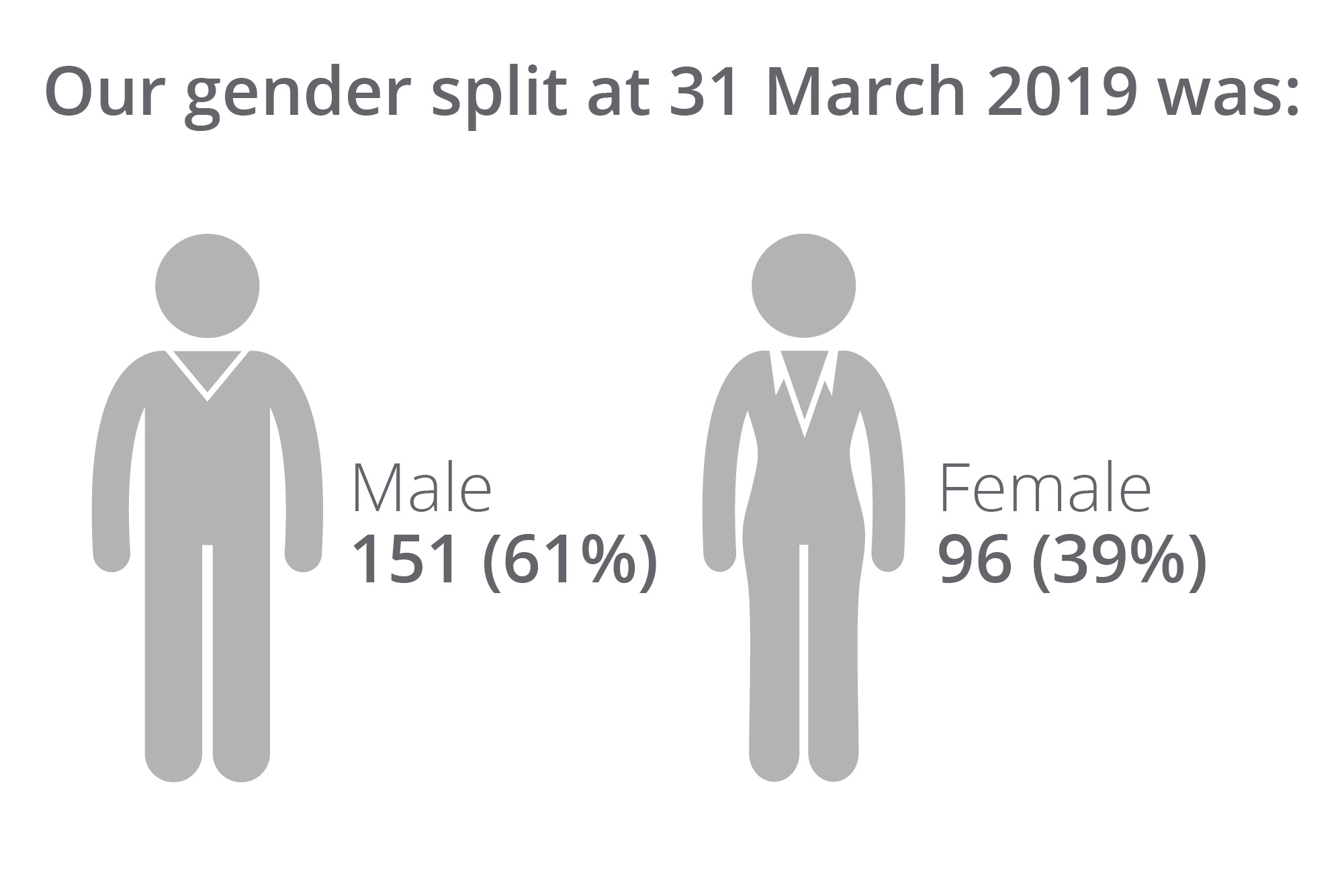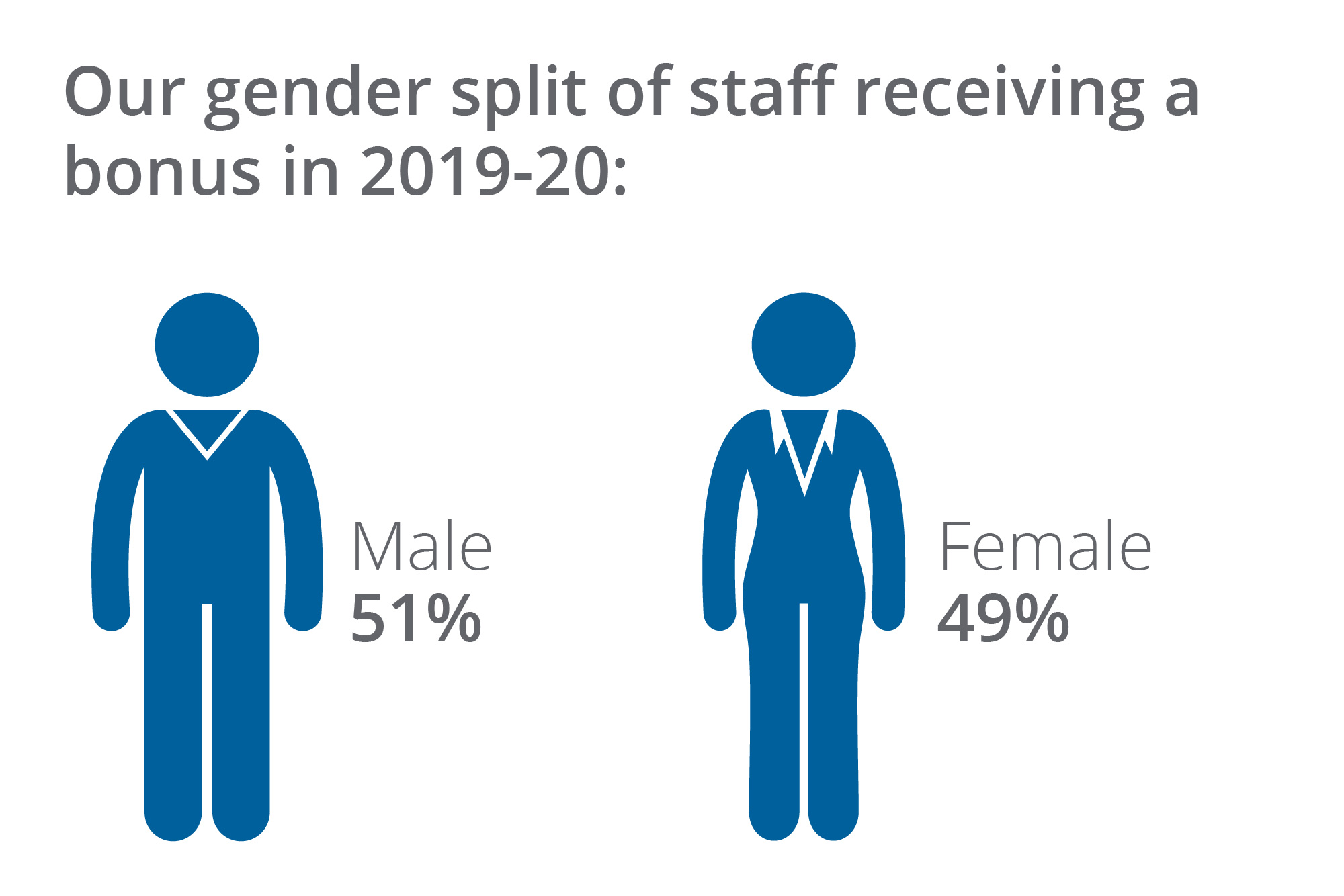Coal Authority gender pay gap report 2020
Published 8 March 2021
1. Foreword
This is the Coal Authority’s second Gender Pay Gap report and covers the period April 2019 – March 2020. We were aiming to publish it in July 2020 so it’s been slightly delayed due to our focus on supporting our staff and customers during the coronavirus pandemic. Our Board remains committed to both addressing this important issue and reporting openly and clearly on our progress and the remaining challenges.
I’m really pleased to say that we have taken further steps forward since last year and that both our mean and median gender pay gaps have reduced. We have also increased the number of women in our organisation this year and you can see the details in sections 3 and 4 below. You can compare this with last years data by reading our gender pay gap report 2019.
We have seen more women coming into the organisation in higher grades and more women being promoted through our internal process which suggests the work we have been doing on recruitment and on mentoring, coaching and leadership development is starting to work. We have delivered the actions we committed to last year and, during 2020 we have developed our plans further and will update on these shortly in our 2021 report.
In our first report I reflected on our gender challenge caused by our organisation being populated from the coal industry which was predominantly male, especially in senior roles. Women were not allowed to work underground until 1989 and so many senior and specialised roles were closed to them. In October 2019 we celebrated 25 years since the Coal Authority was formed. As part of that we recognised 7 individuals who had been here for 25 years. Five of them are incredible women whose skills and experience across areas such as finance, service delivery and IT have been the engine room of the organisation from its inception. Their legacy and support has, and will continue, to inspire us to do more for the women who have joined since and who will join us into the future.
We know that gender isn’t binary and also continue to ensure that trans, non-binary and intersex individuals feel included here. We are committed to the Coal Authority being a great place to work where everyone can feel included. Our equality, diversity and inclusion plans have been expanded and refreshed during 2020 and we have made a strong commitment to becoming a more actively antiracist organisation. Our use of data internally has improved and our commitment to reporting pay gaps / wider diversity data for other protected characteristics remains but we have not achieved it for this year’s report. We will continue to develop this and intend to publish more information as part of our 2021 report.
Whilst delighted with the progress we have made we are not complacent. Our gender pay gap remains too big and we will need to make sustained progress for many years to come. We will keep listening to and learning from our staff, customers and partners in doing this. We know that we can only achieve our mission of making a better future for people and the environment in mining areas by being inclusive. As always I invite you to help, to share best practice, to hold us to account and to challenge where you think we can do better.
Lisa Pinney MBE
Chief Executive and Gender Champion
2. Introduction
The gender pay gap shows the difference in the average pay between all men and women in the organisation, expressed relative to men’s earnings. The gender pay gap is different to equal pay. Equal pay deals with pay differences between men and women who carry out the same jobs, similar jobs or work of equal value.
We support the fair treatment and reward of all colleagues irrespective of gender. This report analyses the findings in more detail and sets out what we are doing to close our gender pay gap.
3. Gender pay gap data
Our gender split at 31 March 2020 was: Male 155 (59%) Female 107 (41%)

Our gender split at 31 March 2019 was: Male 151 (61%) Female 96 (39%)

3.1 Ordinary pay
The comparison of mean and median pay within the organisation continues to show a gap in favour of men although this has reduced compared to our 2019 data. We still have a large number of female staff in our administrative grades, but this year we’ve seen more men being employed at this grade.
| Mean hourly rate 2020 | |
|---|---|
| Male | £22.29 |
| Female | £17.84 |
| Mean gender pay gap | 19.97% |
| Mean hourly rate 2019 | |
|---|---|
| Male | £22.06 |
| Female | £17.23 |
| Mean gender pay gap | 21.91% |
| Median hourly rate 2020 | |
|---|---|
| Male | £21.13 |
| Female | £15.52 |
| Median gender pay gap | 26.49% |
| Median hourly rate 2019 | |
|---|---|
| Male | £21.21 |
| Female | £14.53 |
| Median gender pay gap | 31.49% |
3.2 Bonus pay
The Coal Authority does not pay bonuses. Instead, we operate a performance related pay system. The system is calculated on a percentage of pay which is linked to an individual’s performance review score. We have checks and balances to minimise bias in our system but having a larger proportion of our female workforce in lower pay grades increases our mean gender bonus pay gap, in the same way as our mean gender hourly pay gap.
We have seen progress in both our and median bonus payments in 2020 which is because more women were awarded a higher performance score and therefore a higher bonus pay in 2019-20.
Our gender split of staff receiving a bonus in 2019-20: Male 51% Female 49%

Our gender split of staff receiving a bonus in 2018-19: Male 48.76% Female 51.24%

Mean bonus payment 2020
Percentage difference 21.09%
Mean bonus payment 2019
Percentage difference 33.90%
Median bonus payment 2020
Percentage difference 7.74%
Median bonus payment 2019
Percentage difference 34.31%
4. Pay by quartiles
Compared to 2019, we have seen an increase in the female colleagues in both the lower middle quartile and the upper quartile. This is really encouraging especially in the upper quartile category which has moved from 20.34% in 2019 to 27.27% in 2020. Attracting and developing talented women into these more senior roles and technical professional roles will continue to be a focus for us.
The pay by quartiles at 31 March 2020 was:
| Quartile | Male | Female |
|---|---|---|
| Lower quartile | 29.23% | 70.77% |
| Lower middle quartile | 59.09% | 40.91% |
| Upper middle quartile | 75.38% | 24.62% |
| Upper quartile | 72.73% | 27.27% |
The pay by quartiles at 31 March 2019 was:
| Quartile | Male | Female |
|---|---|---|
| Lower quartile | 22.95% | 77.05% |
| Lower middle quartile | 66.13% | 33.87% |
| Upper middle quartile | 75.38% | 24.62% |
| Upper quartile | 79.66% | 20.34% |
5. Our progress
Over the past year, we’ve been committed to making the Coal Authority a more diverse and inclusive organisation and an organisation that our staff feel proud to work for. This includes building on the steps we reported on in our 2019 report and the commitments that we made for 2019/20. We have:
-
used more inclusive language and approaches for our job adverts
-
proactively encouraged flexible working and family friendly policies, including training managers to consider the benefits when designing roles and teams. We have seen a 2% increase in staff on flexible working patterns over this time
-
undertaken another equal pay audit and acted on the findings
-
worked together through our Women’s network, Women in STEM group and Men’s network to deliver a number of events to raise the profile of the Coal Authority and inspire the next generation of young women and girls to take up a STEM career
-
undertaken an all staff ‘people survey’ and used the results to inform our equality, diversity and inclusion plans. The survey results showed that 85% of people feel that the Coal Authority is committed to creating a diverse and inclusive workforce. We also continue to listen to and learn from our staff networks and our staff engagement group and encourage all members of staff to feel able to have their voice heard
-
continued to work holistically on our equality, diversity and inclusion and wellbeing action plans to ensure that helping people to be themselves is at the heart of everything we do
-
practically supported all those with childcare or caring responsibilities to have the additional time they needed as we went into the Coronavirus pandemic lockdown
-
encouraged our networks to focus on areas that are sometimes difficult to talk about including menopause and supporting those going through it
-
promoted and delivered a programme of women and girls in STEM events such as celebrating international women in engineering day
6. Next steps
We have made good progress this year but we need to continue with our plan and strong commitment to reduce the gap further and strive to make the Coal Authority a more diverse and the best inclusive workplace it can be.
To be a truly equal and inclusive we’re aware we need to better reflect the diversity of the communities we serve and will work towards this over the coming year. By attracting and retaining talented employees from a wide range of backgrounds and with diverse skills and experience, we hope to continue to become a more inclusive workplace.
There is more to do to reduce our gender pay gap further and we are committed taking further steps to do this. During 2020/21 we will:
-
establish a Diversity and Inclusion steering group with a senior Chair and representation across the business and from our networks to ensure that diversity and inclusion is considered across all aspects of the work we do
-
continue to focus on intersectionality and inclusion. We will do more to be an actively antiracist organisation and will work with colleagues to establish a Race Equality network alongside our other staff networks
-
learn from others – including High Speed 2, the Intellectual Property Office, British Geological Survey and the Association of Chief Executives diversity and inclusion group
-
develop and use a structured diversity calendar of events which includes a rolling programme of activities and highlights key events and celebrations for each month to maximise internal and external engagement
-
further develop support, mentoring and coaching for women in the organisation to continue to encourage them to progress
-
continue to empower our Women’s network, Women in STEM group, staff engagement group and other staff networks to have a voice that is heard at all levels of the organisation and can shape decision making
-
develop our metrics to be able to provide more information on pay gaps or other metrics relating to more protected characteristics in our 2021 report
